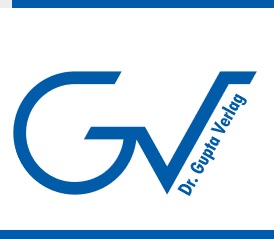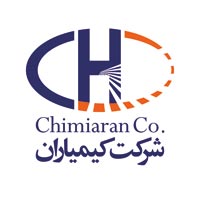
On 27 January 2017 Kraton announced a general price increase of 450 EUR/t in Europe, Middle East, and Africa and 500 USD/t in USA and accordingly in the … .
Read More From Source
Karton History:
ORIGINS
The origins of Kraton Corporation and its role in the development of styrene-based thermoplastic elastomers can be traced back to the U.S. government’s Synthetic Rubber (GR-S) program during World War II. Between 1942 and 1945 this program developed a new styrene butadiene synthetic rubber (SBR) and built plants to provide a critical alternative to natural rubber for making tires for military vehicles during the war.
Shell Chemical Company, who was a butadiene supplier to the SBR plants, bought one of the plants in Torrance, California, when the government decided to sell its holdings in 1955. This newly formed Elastomers Division of Shell Chemical evolved into what is today Kraton Corporation.
POLYMER CHEMISTRY ADVANCES RAPIDLY
The 1950’s and 1960’s were times of rapid advancement for polymer chemistry. In the late 50’s , Shell commercialized an anionic polyisoprene for use in vulcanized rubber goods to broaden their portfolio of elastomers beyond SBR. In 1961, Shell scientists were working on a project to increase the green strength of anionic polyisoprene rubber for tire applications. They discovered that they could go well beyond improving green strength. They were able to make amazingly strong elastomers which required no vulcanization yet the elastomers could be molded into different shapes with heat (thermoplastic). All of this was possible by simply adding styrene monomer to the anionic polyisoprene polymerization in a block sequence.
This fortuitous discovery opened a whole new field of phase separated block copolymer “Nano structures” with amazing properties and structures. These thermoplastic elastomers were called Kraton™ after Kratos, the Greek god of strength and brother of Nike. Over the next months and years, many new polymers and improvements were made. However, the key to success lay in finding and developing the commercial applications where the unique properties of block copolymers offered performance advantages.
1960’S FOOTWEAR – THE FIRST KRATON™ POLYMER APPLICATION
In 1964, Kraton’s Torrance facility made the first production of Kraton D polymers and SBS compounds for footwear applications. About the same time the first rotary direct injection machine for footwear production was introduced in Germany. Kraton engineers realized that injection molded Kraton rubber compounds allowed faster manufacturing than conventional vulcanized shoe soles and that Kraton shoe soles would have better properties than PVC soles (lighter weight and better wet grip). The popularity of Earth Shoes with their large soles dramatically increased demand for SBS block copolymers, driving the construction of the first dedicated block copolymer plant in Belpre, Ohio in 1971.
1970’S REVOLUTIONIZING PRESSURE SENSITIVE ADHESIVES
The use of styrenic block copolymers in adhesives and sealants was first introduced in 1965 and continues to be among the most important applications for the company. Kraton D polymers (SIS and SBS grades) combine ease of formulation with low viscosity so they can be used at high solids in solvent applications or as hot melts. The environmentally friendly hot melt applications are the highest volume adhesives applications today for styrenic block copolymers (packaging tape, labels, and diaper spray adhesives)
Kraton G polymers, SBCs with hydrogenated midblocks were also introduced in the late 60’s. They are elastic and flexible with the additional benefits of enhanced oxidation, UV and weather resistance, higher service temperatures and increased processing stability. Kraton G polymers are widely used today in production of soft, strong compounds for handles and grips, elastic components in diapers, oil gels for telecommunications and medical applications, tougheners for clear polypropylene, impact modifiers of engineering thermoplastics, sealants, cosmetics, and many other innovative applications.
1980’S INNOVATION FOR ROOFING AND ROADS WORLDWIDE
In 1967, the first trials of block copolymers for road and roofing applications were conducted. However, the use of SBS in roofs didn’t take off until the 70’s in Europe and the early 1980’s in the US when commercial roofing began using more insulation which resulted in larger temperature extremes and more movement in the roofing structure. This caused premature failures in many conventional asphalt roofs. Stronger and more flexible roofing felt made from SBS modified asphalts took hold in the market.
Road technologies shifted in the early 1990s when materials standardization led to dramatic increases in the use of SBS modified asphalts, especially for climates with large temperature swings. The use of Kraton D polymers for bitumen modification increases durability and improves resistance to rutting and low temperature cracking. It is now globally recognized as the preferred bitumen modifier for both roads and roofing materials.
1990’S KRATON COMPOUNDS ARE IDEAL FOR SOFT TOUCH
Soft touch overmolding has become a value-added market trend that has revolutionized a broad spectrum of end-use products from automotive to sporting goods. The technology involves molding a soft-skin polymer layer on top of a rigid, hard engineering thermoplastic. This provides a highly frictional and waterproof surface, vibration damping, and impact resistance, insulation from heat and electricity and cushioning for improved ergonomics.
Although there are many types of thermoplastic elastomers for an overmolding fabricator to choose from, Kraton’s styrenic block copolymer formulations are of the most widely used in the marketplace. This is due to the wide hardness range, ease of color ability and good UV stability as well as low polarity which minimizes the need for drying prior to use.













